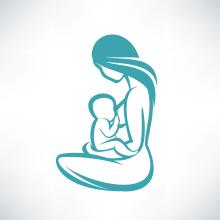Nutrition, Physical Activity, and Obesity: Breastfeeding Initiatives
Human milk feeding alone is the ideal form of nutrition from birth. Breastfeeding provides a range of benefits for infant growth, immunity, and development. It also can improve the health of the lactating person. Human milk feeding may protect both the infant and lactating person against a range of chronic diseases, like diabetes, cardiovascular disease, and obesity.
Breastfeeding contributes to economic benefits for families, health care systems, workplaces, and communities. While breastfeeding rates overall are fairly high, there are large disparities among different groups. There also are opportunities to help families provide human milk alone and for longer.
Policies, systems, and environments that support continued lactation are essential to help families meet their infant feeding goals. Below are some examples of resources to help improve and expand lactation support in a variety of settings.
Wisconsin resources and publications
Ten Steps to Breastfeeding-Friendly Childcare Centers, P-00022—Resource kit available in English and Spanish.
This resource outlines 10 basic steps to create a child care program that supports families who choose to provide human milk. It is a key resource for Wisconsin Breastfeeding Friendly Child Care. This initiative is a recognition program for group and family child care providers that offers training, tools, and other support. Local health agencies or coalitions interested in working with child care programs in their community can email wbcbreastfeedingfriendly@gmail.com for details.
Hospitals and health systems play a major role in helping families prepare for birth and lactation, and for setting a strong foundation for ongoing lactation support. Breastfeeding in Wisconsin: How Hospital Actions Can Affect Breastfeeding, P-02131 (PDF) from 2018 highlights maternity care practices that support breastfeeding, data from Wisconsin hospitals, and opportunities for improvement. The document references data from the CDC (Centers for Disease Control and Prevention) Maternity Practices in Infant Nutrition and Care (mPINC) survey, which assesses policies and practices that affect how babies are fed. Maternity Practices in Infant Nutrition and Care (mPINC) COVID-19 Supplemental Survey: Wisconsin Hospitals' Breastfeeding Practices and Support, P-03125 (PDF) from 2021 describes how some of these practices changed during the early months of the COVID-19 pandemic.
Worksites and employers also can support breastfeeding families by offering accommodations and benefits to employees preparing for and returning from parental leave. The Wisconsin Breastfeeding Coalition: Worksites has helpful resources and links to information for both employers and local agencies or coalitions interested in assisting worksites in their community. Federal law requires lactation accommodations for some employees to express milk at work.
Related topics
The Division of Public Health (DPH) supports lactation and human milk feeding through a variety of programs. To learn more, visit the Wisconsin Women, Infants, and Children (WIC) program’s Breastfeeding and Lactation Support page and our Maternal and Child Health Program’s Breastfeeding page.
Find more general information on the Breastfeeding Resources page
Note on inclusive language
We recognize that not all people use the term “breastfeeding.” Chestfeeding and bodyfeeding are other ways to describe the feeding of human milk to a child, whether directly from an individual or from those who exclusively pump their milk or use a supplemental nursing system. While our resources may occasionally use the term “breastfeeding” and “mothers,” we intend for this information to be inclusive of all families.



